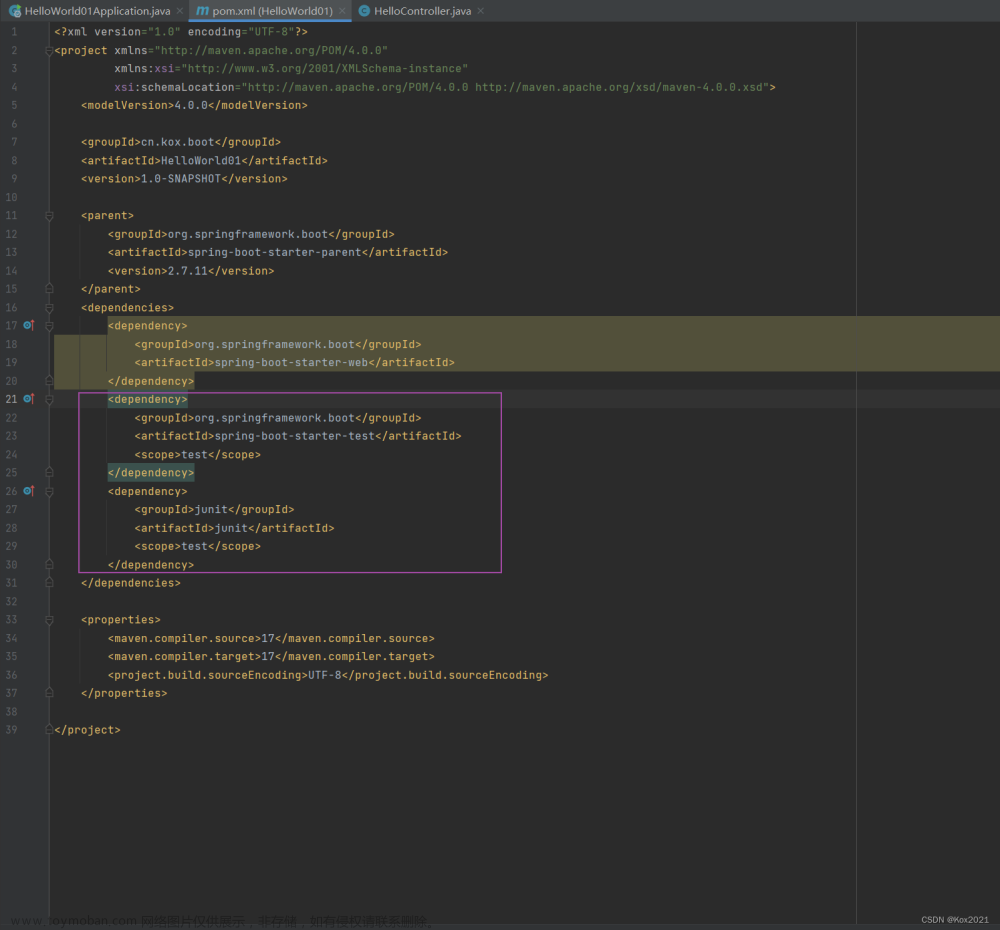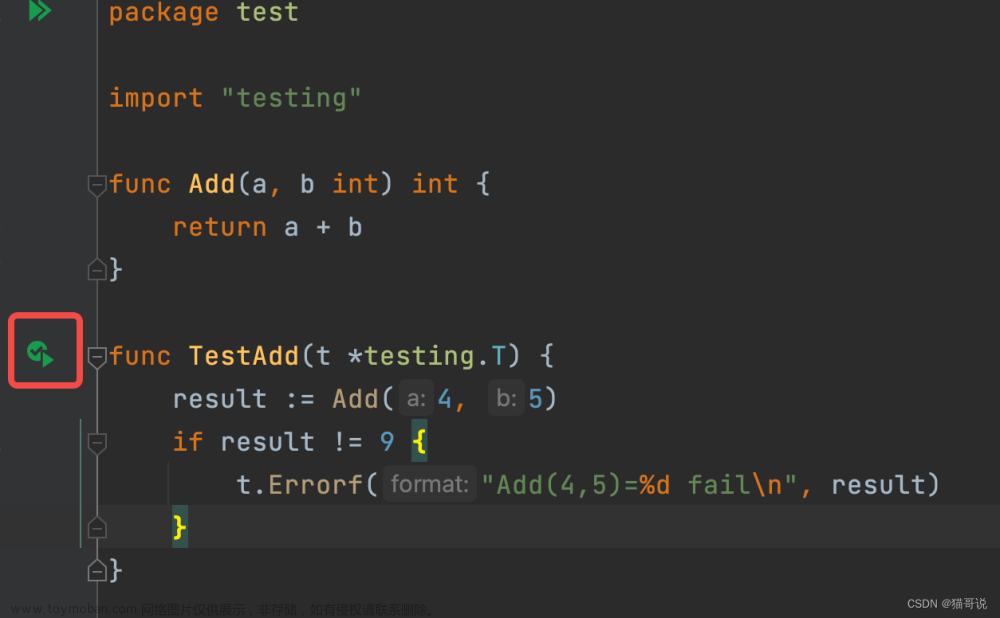本文开始介绍googletest/googletest/sample/sample5_unittest.cc
有关TEST_F测试夹具的使用案例
class QuickTest : public testing::Test {
protected:
// Remember that SetUp() is run immediately before a test starts.
// This is a good place to record the start time.
void SetUp() override { start_time_ = time(nullptr); }
// TearDown() is invoked immediately after a test finishes. Here we
// check if the test was too slow.
void TearDown() override {
// Gets the time when the test finishes
const time_t end_time = time(nullptr);
// Asserts that the test took no more than ~5 seconds. Did you
// know that you can use assertions in SetUp() and TearDown() as
// well?
EXPECT_TRUE(end_time - start_time_ <= 5) << "The test took too long.";
}
// The UTC time (in seconds) when the test starts
time_t start_time_;
};
这里的QuickTest继承自testing::Test,并重写SetUp和TearDown方法,SetUp方法在每个TEST_F开始运行一次,退出执行TearDown方法一次。
这个案例里记录整个TEST_F测试夹具的测试用例的运行时间
class IntegerFunctionTest : public QuickTest {
// We don't need any more logic than already in the QuickTest fixture.
// Therefore the body is empty.
};
// Now we can write tests in the IntegerFunctionTest test case.
// Tests Factorial()
TEST_F(IntegerFunctionTest, Factorial) {
// Tests factorial of negative numbers.
EXPECT_EQ(1, Factorial(-5));
EXPECT_EQ(1, Factorial(-1));
EXPECT_GT(Factorial(-10), 0);
// Tests factorial of 0.
EXPECT_EQ(1, Factorial(0));
// Tests factorial of positive numbers.
EXPECT_EQ(1, Factorial(1));
EXPECT_EQ(2, Factorial(2));
EXPECT_EQ(6, Factorial(3));
EXPECT_EQ(40320, Factorial(8));
}
这里IntegerFunctionTest 继承自QuickTest ,内部无其他实现,测试夹具IntegerFunctionTest整个运行时间
class QueueTest : public QuickTest {
protected:
void SetUp() override {
// First, we need to set up the super fixture (QuickTest).
QuickTest::SetUp();
// Second, some additional setup for this fixture.
q1_.Enqueue(1);
q2_.Enqueue(2);
q2_.Enqueue(3);
}
// By default, TearDown() inherits the behavior of
// QuickTest::TearDown(). As we have no additional cleaning work
// for QueueTest, we omit it here.
//
// virtual void TearDown() {
// QuickTest::TearDown();
// }
Queue<int> q0_;
Queue<int> q1_;
Queue<int> q2_;
};
// Now, let's write tests using the QueueTest fixture.
// Tests the default constructor.
TEST_F(QueueTest, DefaultConstructor) {
EXPECT_EQ(0u, q0_.Size());
}
// Tests Dequeue().
TEST_F(QueueTest, Dequeue) {
int* n = q0_.Dequeue();
EXPECT_TRUE(n == nullptr);
n = q1_.Dequeue();
EXPECT_TRUE(n != nullptr);
EXPECT_EQ(1, *n);
EXPECT_EQ(0u, q1_.Size());
delete n;
n = q2_.Dequeue();
EXPECT_TRUE(n != nullptr);
EXPECT_EQ(2, *n);
EXPECT_EQ(1u, q2_.Size());
delete n;
}
QueueTest类继承自QuickTest,并重写SetUp方法,在SetUp方法里调用QuickTest的父类方法,然后对Queue队列做初始化,
TEST_F(QueueTest, DefaultConstructor) {
EXPECT_EQ(0u, q0_.Size());
}
这里判断q0队列大小是否为0u文章来源:https://www.toymoban.com/news/detail-716017.html
TEST_F(QueueTest, Dequeue) {
int* n = q0_.Dequeue();
EXPECT_TRUE(n == nullptr);
n = q1_.Dequeue(); //先出列判断是否为nullptr,在判断数据是否为1,最后判断队列大小是否为0,最后delete删除n
EXPECT_TRUE(n != nullptr);
EXPECT_EQ(1, *n);
EXPECT_EQ(0u, q1_.Size());
delete n;
n = q2_.Dequeue();
EXPECT_TRUE(n != nullptr);
EXPECT_EQ(2, *n);
EXPECT_EQ(1u, q2_.Size());
delete n;
}
q0_.Dequeue队列本来大小为0,出列的数据为nullptr文章来源地址https://www.toymoban.com/news/detail-716017.html
到了这里,关于Google单元测试sample分析(二)的文章就介绍完了。如果您还想了解更多内容,请在右上角搜索TOY模板网以前的文章或继续浏览下面的相关文章,希望大家以后多多支持TOY模板网!









![[C++] 基础教程 - 如何使用google test进行单元测试](https://imgs.yssmx.com/Uploads/2024/02/766956-1.png)



